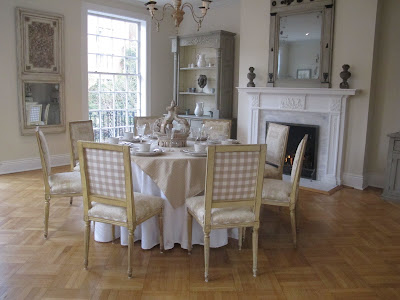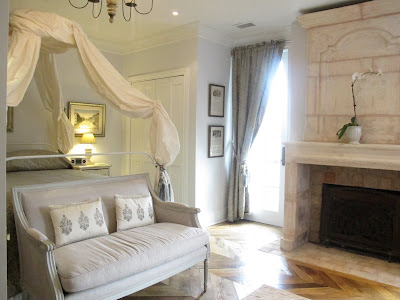By Beth Herman 
When a mold-ridden, baby blue, vinyl-sided 1970s “fake” farmhouse in Frederick County, Va., needed a total architectural alignment (translation: to raze or not to raze), Reader & Swartz Architects recruited the growing  young family who lived there in a proactive design effort largely about lifestyle.
young family who lived there in a proactive design effort largely about lifestyle.
With yoga practice paramount among homeowners Stephen and Julie Pettler’s daily requisites, the original 2,858 s.f. home was reimagined “poetically,” according to Principal Chuck Swartz, to reach up and out, emulating a yoga pose. Appreciating the sun’s path in the course of the day with considerable length and glass added to the southern face, the ultimate 5,125 s.f. design included a soothing, cork-floored yoga room and library, and a dedicated school room for home schooled Zoe, now 14, Olivia, 11 and Sophia, 8.
Kapalabhati (breathing technique for cleansing breaths)
“When we started the project, there was really nothing in the house worth keeping because it was neither historic nor special,” Swartz said, recalling a kind of initial 911 call from the homeowners. “One of the things that had happened along the way was that with each improvement to the house (purchased in 2002), things got worse,” he continued, explaining that contractors had clogged or sealed crawl spaces and attic vents through the years. Project manager Kevin Walker called its walls “…a haven for mold.” Suffering serious respiratory ailments as a result and requiring mold abatement, the family had considered demolishing the property except for a conservation conscience that impelled it to investigate other options.
“In another situation, we might have bulldozed,” Swartz conceded, “but our client charged us with doing as good as we could environmentally, so that meant fixing the mold situation and not using toxic materials that might off-gas. Anything that was going into this house had to be thoughtful,” he said. Construction waste was sorted and recycled when possible. Additionally, Swartz recalled that the structure was situated perfectly–on a private road with mature trees and lots of land and vistas, and siting that utilized passive solar gain – making the decision to maintain the footprint of the house that much easier.
Surya Namaskara (sun salutation)
Building a 2,267 s.f. two-story addition to the East containing the yoga room, a library and master suite above it, and a one-story living room to the Southwest, the house went from being a “boxy piece of something to something that stretched up and out to the sun,” said Swartz. Sporting a gable roof made of trusses, the architects were able to remove them and create a simple shed roofline. “By putting a new hat on it and adding the two wings, we really changed the house’s sense of self,” he affirmed.
Retaining the existing box as the core of the new house, this became the kitchen with three children’s bedrooms, a laundry room and bathroom above it. While working  within the structure’s traditional though limiting eight-foot ceilings, the architects decided to open up the second floor above the kitchen, creating a space that at its apogee is 28 feet high, and which fosters easy conversation between downstairs and upstairs occupants (Swartz quipped about waking up the kids from the kitchen). A light monitor – or vertical window with a tiny roof – at the top channels sunlight everywhere, and cedar trees a friend of the Pettler’s was cutting down anyway were reincarnated as columns that support steel used in some of the kitchen construction.
within the structure’s traditional though limiting eight-foot ceilings, the architects decided to open up the second floor above the kitchen, creating a space that at its apogee is 28 feet high, and which fosters easy conversation between downstairs and upstairs occupants (Swartz quipped about waking up the kids from the kitchen). A light monitor – or vertical window with a tiny roof – at the top channels sunlight everywhere, and cedar trees a friend of the Pettler’s was cutting down anyway were reincarnated as columns that support steel used in some of the kitchen construction.
In the kitchen, which Swartz called the home’s spiritual center because its design connects everyone, cabinets of maple, crushed sunflowe r seeds, bamboo and sorghum can be seen, with towering wood structures which hold the oven and refrigerator shooting up through the open space with a skyscraper-like or sun worshipping quality. Topped with wells (not planters that can leak), house plants nest in self-watering pots so as not be over-watered. On the second floor, little doors open up to the wells for plant maintenance. The living room addition, in part defined by a soapstone structure that houses a woodstove and bookshelves, has a surprise tree leaning out from a corner of the structure. Deep shelves are lined with metal to hold firewood, and in a nod to nature, a boulder–unearthed during the construction process–now doubles as sculpture and seating. The space reaches up and out, toward the sun, with a ceiling trajectory of about eight feet to more than 15 feet.
r seeds, bamboo and sorghum can be seen, with towering wood structures which hold the oven and refrigerator shooting up through the open space with a skyscraper-like or sun worshipping quality. Topped with wells (not planters that can leak), house plants nest in self-watering pots so as not be over-watered. On the second floor, little doors open up to the wells for plant maintenance. The living room addition, in part defined by a soapstone structure that houses a woodstove and bookshelves, has a surprise tree leaning out from a corner of the structure. Deep shelves are lined with metal to hold firewood, and in a nod to nature, a boulder–unearthed during the construction process–now doubles as sculpture and seating. The space reaches up and out, toward the sun, with a ceiling trajectory of about eight feet to more than 15 feet.
 Namaste (the soul in me acknowledges the soul in you)
Namaste (the soul in me acknowledges the soul in you)
“We wanted to make a modern house that was really wonderful, but not make it all about the architect,” Swartz explained, also speaking to the façade. To that end, a decision to personalize the home’s exterior was manifested in the expanded use of “tattoos,” wherein art panels were painted by family members, relatives, friends and even an artist in Japan where Julie Pettler had worked. “They had friends over, and had champagne and chocolate, telling people they couldn’t le ave until they painted a panel,” Swartz recalled, noting a clear poly coating was applied in the end. “Now it’s like a time capsule on the outside of the building,” he said.
ave until they painted a panel,” Swartz recalled, noting a clear poly coating was applied in the end. “Now it’s like a time capsule on the outside of the building,” he said.
Skinned in cedar siding, the exterior material finds its way to the interior, framing the staircase and seen again outside the kitchen where the living room is. Unpainted plaster walls on the first floor and drywall for bedroom walls maintain the space’s clean simplicity, with downstairs flooring of reclaimed wormy chestnut. The stairs themselves, made of hickory, are each two risers high, essentially creating bleacher seating for the girls and/or platforms for pots and plants. Rafts between the bleachers facilitate climbing, with a flying staircase effect achieved beyond the landing.
hickory, are each two risers high, essentially creating bleacher seating for the girls and/or platforms for pots and plants. Rafts between the bleachers facilitate climbing, with a flying staircase effect achieved beyond the landing.
With a high efficiency HVAC that includes ground-loop geothermal, radiant floor tubing and an on demand tank-less water heater, as well as other sustainable elements such as low or no-VOC stains and sealants, and high efficiency fixtures and fittings, the house meets the personal criteria of an environmentally- and health-conscious young family.
“It was important to me to see how a family could be that involved in the architecture,” Walker said, noting the process was more about the people living there than the architects. “They are so much more in tune with the results because of that. It was good to see them come back to their home, but with a whole different life.”



"After" photography by Judy Davis/HDPhoto
 So named for its location north of Massachusetts Avenue, NoMa is a neighborhood that's beginning to assert an identity, if still gangly in its adolescence. But developers and restaurateurs have faith the area will take shape. Here's what's happening:
So named for its location north of Massachusetts Avenue, NoMa is a neighborhood that's beginning to assert an identity, if still gangly in its adolescence. But developers and restaurateurs have faith the area will take shape. Here's what's happening:
 M Streets N.E.
M Streets N.E. Constitution Square: Of the 440 residential units in The Flats 130, 90 have already been leased since its opening late last year, with 19 new leases just in January. Also set to open in the area is Roti as well as the largest location of The Perfect Pita, which has leased space across from The Courtyard Marriott.
Constitution Square: Of the 440 residential units in The Flats 130, 90 have already been leased since its opening late last year, with 19 new leases just in January. Also set to open in the area is Roti as well as the largest location of The Perfect Pita, which has leased space across from The Courtyard Marriott. building by Trammel Crow Company.
building by Trammel Crow Company.














































